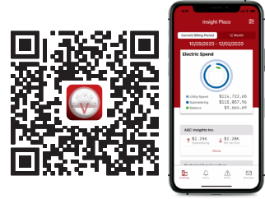How kW and kWh Affect the Cost of Commercial Electricity
Commercial electricity rates are crazy-complicated. Here's how kW and kWh impact how much you pay.
Of all the units in operations, we probably get the most questions about how to distinguish between kW and kWh.
Both are units of energy AND both can impact the monthly electric bill (for commercial properties). But they don't impact the billing in quite the same way. Here’s a breakdown of what these terms mean and how they affect your utility costs.
What's the Difference Between kW and kWh?
A kW (or kiloWatt) is the rate of electricity consumed (or produced) at any one time. For example, a 1200-ton chiller might “draw” (or “demand”) more than 500 kW when it starts up and then settle into an average of around 300 kW as it continues to operate.
A kWh (or kiloWatt-hour) is the total amount of electricity consumed (or produced) over a given period of time. So if you operate that chiller 80 hours over the billing period, your electricity provider will charge you for the sum of all the kW used during that 80 hours.
How Do kW and kWh Affect Your Bill?
The largest variable in your monthly electric bill is – no surprise – your total consumption (i.e., your kWh) for the billing period. But – and this may be a surprise – your kW also has a big impact because your billing rate is determined by your peak kW during the period.* The higher your peak kW, the higher the rate.
In other words, the utility provider looks at your peak kW to determine which billing rate applies over this billing period. Then they multiply your total consumption by the billing rate to calculate your monthly charge (minus base charges and other fees). So if your peak kW was higher this month, your costs will go up even if your usage was identical.
So yes, utility providers charge you the highest possible rate they can, even if that peak was an aberration and you usually use far less electricity. They also don't use a rate that matches your average kW. The logic is that at any point they had to be able to supply you that highest kW, because you could have demanded all that power for the entire billing period, and the utility would have supplied it. And some facilities – such as hospitals and data centers – do have consistently high loads like that. Commercial properties, not so much.
(*We’re oversimplifying here. Your rate is actually determined by the highest kW of two contiguous 15-min periods over the entire billing period. But that’s a mouthful and may be more confusing than helpful. We're also omitting time-of-use programs and a discussion of different types of peak charges for clarity's sake. We said commercial rates were complicated!)

How to Use kW and kWh to Save Money
Commercial electricity rates are much more complicated than residential, and kW vs. kWh are definitely contributing to the overall complexity of your bill. But there's good news here as well. For unlike all the other fees commercial electricity customers are subject to, your kW and kWh values are something you can affect.
For example, if you can limit your chiller to 60% FLA (full load amps) on startup, you can reduce the large rush of power that occurs if your CHW plant operates on a building schedule. This change can then reduce the peak for which you're charged a premium amount. (For example, instead of paying $15.50 per kWh, you might be able to bring the peak down such that you only have to pay $14 per kWh).
And on the kWh (usage) side, if you can lower how much total electricity is consumed over the billing period, you’ll pay less because you’re straightforwardly using less.
For properties that use tens or hundreds of thousands of kWh every month, bringing down either or both of these values creates substantial savings.
What Else Makes Up the Bill?
As we said above, kW and kWh create the majority of the monthly electric bill, but there's so much to commercial billing that we didn't cover: Supply charges. Delivery charges. Rate groups. Landlord fees. On peak, off peak, mid peak. Not to mention all the different sales taxes. It's a lot to deal with. That's why we assign each client their own billing analyst. Every month, you have someone familiar with your situation reviewing your bills for accuracy and able to answer questions. Don't hesitate to reach out. (You can find your analyst's name and contact info on the cover letter of your latest billing package.)
Let's Recap!
kW = how much electricity a piece of equipment or a service area is demanding at any point in time.
The highest kW in the billing period determines how expensive your electricity is for that period. The lower the peak kW, the lower the rate you're charged. So if you lower your peak, you pay less, even if you consume the same total amount each month.
kWh = the total amount of electricity the equipment or service area consumed over that billing period.
Your kWh is your total consumption. If you can reduce how much you use overall, you’ll pay less, even if you can’t change the rate you’re charged for that power because you can't move or reduce your peak usage.
You Might Like
About utiliVisor
Your tenant submetering and energy plant optimization services are an essential part of your operation. You deserve personalized energy insights from a team that knows buildings from the inside out, applies IoT technology and is energized by providing you with accurate data and energy optimization insights. When you need experience, expertise, and service, you need utiliVisor on your side, delivering consistent energy and cost-saving strategies to you. What more can our 45+ years of experience and historical data do for you? Call utiliVisor at 212-260-4800 or visit utilivisor.com



